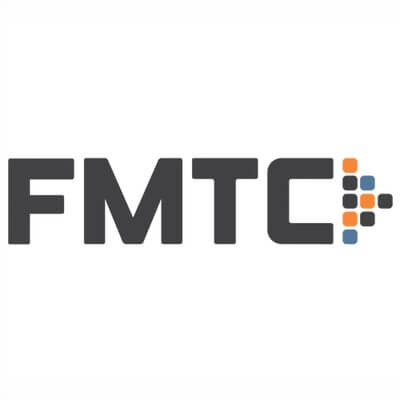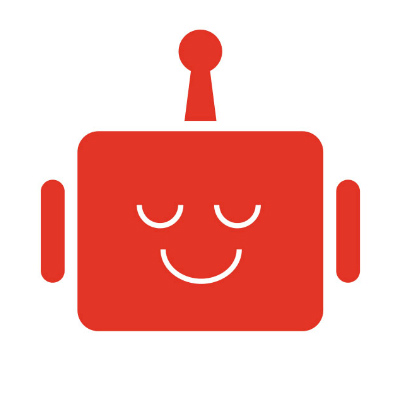What is the hardest part about managing a remote workforce?
Balancing socializing in a virtual workspace with not working in a silo. When working remotely, it’s so easy to either block out everything and become isolated, or get so caught up in the various conversations taking place that it becomes a challenge to focus. This is especially true because online conversations are archived and readily available, unlike, say, missing the morning banter around the coffee maker.
Different laws in various states and keeping on top of that while trying to be fair to the masses. 2. Keeping everyone motivated and energized, especially during the stressful or busy weeks. 3. Making sure we are hiring resilient and very self-motivated, positive people.
We’ve had the most success with employees who came into the experience with a realistic understanding of the nature of the job and what it’s like to work remotely.
Making sure they are happy employees. You can’t see them and must rely on virtual communication, which doesn’t always reveal an unhappy employee.
The toughest part about managing a remote workforce is making sure everyone feels connected to the team and culture of Appirio. We work very hard to have local team events, virtual events, and constant video meetings; however, it can still be difficult to ensure everyone feels connected. Since you don’t see your team members in the office on a regular basis you may not always know what is going on in their day to day so it is crucial to find ways to stay in touch regularly.
You don’t develop such close relationships as you do with people whom you see every day. This can be a positive too though, as productivity tends to remain high and also you might find that you didn’t get on with someone so well if you saw them every day!
Creating a healthy balance between trusting our team members to manage their work time and monitoring their activity. We have team members use time management software to track productivity and also as a method to be sure team members are staying on task. Creating that balance, implementing that oversight, is necessary not only for our internal operations but to let clients know we hold our team members responsible. At the same time, we don’t want our team members scared to step away from the computer for a second, and so we rely on productivity and team leads to make judgement calls if there are concerns about a team member’s time use.
The most difficult part is helping your team stay motivated and feel part of a team when they have never met. In the office, a sense of camaraderie is hopefully achieved through daily interaction and rallying around a common goal. The same is true for remote team, minus the daily interaction in the traditional water cooler sense.
Making sure everybody has the same access to information, which is a matter of making information both available and easy to find. We manage this by using tools that allow us to centralize information – in the past, that’s included private wikis, but has shifted over time toward Google Drive and other internal help doc databases. (We’ve found that as a company scales up, wikis can grow unwieldy – information is added without the central oversight it often needs to stay organized.)
Remembering to create and allow for opportunities to share and exchange information so everyone is kept in the loop, accountable, and takes pride and ownership in the growth of the company.
There’s a lot of communication done in an office that you don’t have with a remote team. The unspoken communication is huge, and we just don’t have that when both parties are behind a screen. I believe that building trust with a remote workforce takes much longer versus a traditional office, but can be destroyed much quicker.
Managing a remote work force isn’t terribly hard as long as your rapport with your remote employees is strong. Doing the initial work during onboarding and offsites to build trust amongst employees and managers goes a long way toward making remote management simple.
The biggest challenge is the “if only we were together (physically)” thought that pops into your head on those days when you want to call a 20-minute brainstorm or quickly tackle feedback or a conflict that arises. It takes effort to delete that incorrect belief from our brains and remember that we just need to develop ways around those perceived limitations.
At GitHub it’s important to us that we look after our employees. We’re not just in this for short-term productivity, we’re in this for the long-haul, and that means that you need to view the health of your people and teams a bit more holistically.
What we’ve found is that it’s actually quite hard to ensure people are making full use of what’s offered to them. It’s easy to view policies as just sets of rules about what you can or can’t do, but in a distributed company you rely on written documentation much more than in non-remote companies, so one of the challenges we’re facing as we grow is how we can make sure our management practices and internal documentation are focused on encouraging healthy behaviour. That’s the only way you’re going to get sustainable productivity and growth in the long-run.
Getting everyone to not use their mute buttons on group calls. It can be difficult to have meetings that require brainstorming and input from many on a big group phone call. It is difficult to replace the value of in-person interaction for these kinds of meetings.
Our team members span the globe, from Mexico to South Carolina, from California to Indonesia. Our biggest challenge is accommodating the different time zones and ensuring consistent, productive communication. Skype calls are difficult to schedule. It forces team members to be flexible and accommodate the different time zones. For example, our monthly management meetings are generally at 6:30pm EST, which is 6:30am in Indonesia! Once again, it goes back to hiring the right people who are committed to making it work, even when it’s less than convenient.
There’s arguably more overhead placed on the shoulders of leaders in a remote company. The hardest thing is to acknowledge the overhead and be really organized about it. Being transparent and keeping everyone connected is something leaders in your company have to be constantly on top of. Of course, the wonderful tradeoff is a very productive workforce if you get this stuff right.
Sometime it would have been good to go after work in a pub or somewhere else and talk about a project and come up with some solutions or also find out what’s the real problem of the worker, is it private or business. Reading between the lines is much harder in a remote team.
It’s about making sure there is enough time to actually support staff, and that there are effective processes around what we expect our managers to do (a general frame for managing relationships, performance, feedback, and outcomes). This is as specific and prescriptive as how frequently they need to check in with their staff and how they can be supportive without face-to-face contact. Communication is key.
Managing outgoing sales efforts.
It can be tough to make sure everyone, across departments, is on the same page about the big picture initiatives in the company. We resolve this issue by having all-company meetings, training sessions, and weekly sprint reviews.
Finding the balance between asynchronous and synchronous communication. It is tempting to try to do everything possible with asynchronous communication (e.g. email, etc.) but there are so many kinds of things that hugely benefit either in quality or efficiency through synchronous communication.
One of the hard parts we’re working through now is adding layers of management we didn’t have before. We’ve grown a lot over the past few years, and that means that now there are more moving pieces to look after.
We recently introduced a director level within the organization, which has overall been pretty well-received by our team. The challenge was communicating what that meant to everyone, since it’s not like we can just gather everyone in the break room to make an announcement. We chose to share the announcement at our team retreat earlier this year so we could have an open conversation and address questions with the bulk of the team. We followed up with announcements for those not present at the retreat.
Making sure people are consistently aligned with the mission. People can start to lose track as they get heads down on the day to day stuff, so maintaining alignment and providing context on the bigger picture is a full time job as CEO.
Working with the changing priorities of remote workers as the economy changes. As the economy evolves, workers prioritize new and different demands on their attention. Keeping pace with those changes greatly benefits organizations, so they can readily adapt to support their workforce.
I’ve only ever managed a remote workforce, so I don’t know whether the challenges are specific to a remote workforce, but velocity of work, building rapport with a workforce that you don’t have much face-to-face interaction with, and, to some extent, ideation can be more difficult with a remote workforce.
This may sound like a humblebrag, but our biggest challenge is enforcing our work-life balance culture. We are growing so fast and there is alway work to be done. Remote workers tend to over do it (work). So being mindful of when someone is running out of gas and not letting them crash is our biggest concern. We may not always be able to push them to relax right then, but when the project or issue is over we, as a team, will force them to take few days or a week off and re-charge. Everyone steps up to cover that person in their absence, as they know they may need a break at some point as well.
The hardest thing for me is that the tools we use to communicate can contribute and enable an organization-wide urgency addiction that makes it hard for people to prioritize, focus on their craft, and achieve a flow state in their work. Slack, for all its greatness, can cause people to jump from conversation to conversation and it can very easily lead to burnout.
At Ricochet, we spend a lot of time making sure people don’t get sucked into false urgency. Each team member makes a plan at the start of the day and we go over their ability to achieve their plan during our one-on-ones. If they are unable to actualize their plans each day, it means they either need coaching on doing what they set out to do (or discerning between true urgency and false urgency), or the organization needs to get better at its own planning and needs to stop throwing urgent tasks at people (which can easily lead to burnout).
It’s harder to have a general “pulse” of your team. You can’t see their body language and moods as much on a day-to-day basis, so you’re left with fewer signals to interpret how people are feeling.
The hardest part about managing a remote workforce is the propensity for terse communication. Often times, people are chatting, trying to quickly accomplish something or just giving quick answers and through non-verbal communication channels, these can come off harshly or seem to lack empathy. It’s important to remember the person sitting at the other end of the interweb is not a bot and to recognize how they may be perceiving certain things. Face-to-face communication is often much friendlier and cordial so sometimes remembering to take a little extra care can be difficult.
Building rapport with new coworkers can be difficult when you don’t get the casual social interactions you often get for free when everyone is in an office. You have to make an extra effort to reach out to new people and make them feel like they know you personally, not just as their boss.
Sensing everybody’s mood, level of motivation, identifying issues before they develop. With an on-site team, you get to take advantage of facial expressions, body language, etc. With the remote team, there are a lot of subtleties, often taken for granted, that are missing. Managers really need to be good listeners and learn to “read between the lines”.
Scheduling meetings can be tricky because we cover a lot of timezones and some people may choose to work very early or very late, depending on their preference. This may be more of a feature than a bug, since meetings are generally a waste of time.
The other hard thing is convincing new employees that they really do have the flexibility to work where and when they want. If you want to work from Portugal, work from Portugal; you don’t have to ask for permission. Just get your work done.
Surprisingly, one of the hardest parts of managing a remote workforce is that as the company grows, working across teams becomes a challenge. For instance, many members of the marketing team may not know any of the developers. Keeping an updated org chart is a must-have.
Not seeing them in person every day. Most people think the hardest part about managing a remote workforce is about productivity. It’s not. We have incredibly talented and interesting people on our team. As a founder, you get to selfishly hire people who you’d hang out with whether you worked together or not. So not seeing all of them every day is a tad sad panda. We may have to double down on retreats.
Working from home can be isolating, especially for staff who have never worked remotely or for TNTP before. You have to be proactive about building relationships and friendships across the organization. It can sometimes take longer than we’d like for a manager to realize that someone is doing something inefficiently if you’re not in the same space. And it’s easy for the hours to get long when you don’t have to formally pack up and go home at the end of the day.
These challenges have forced us to get really intentional about building a shared culture for everyone at TNTP, which we reinforce through virtual team-building (see more above), our annual in-person conference, site visits for staff to see what different teams across the organization are doing, and our signature experience for staff – Leadership Lab – a series of trainings to develop leaders at all levels across TNTP.
The hardest part of management is keeping everyone on the same page. As I mentioned above, we try to do this weekly, monthly, and quarterly. As CEO, the highest leverage thing I can do is focus the team’s efforts on a single problem or area of opportunity. My job is to get everyone in the boat and rowing in the same direction.
Learning how to effectively communicate remotely takes practice. How much to share, how often, who to include, and how to ensure the intended message is received. Knowing when to step in and when to let go is also a challenge. In my experience, people work better when they are armed with goals and the tools they need to achieve them, they know you have their back, and they are given the space to do what’s been asked of them.
It’s a bit of a tie for me — the two things I struggle with most are satisfying each person’s needs as a remote worker, and secondly, maintaining the trust you have in people.
Each person has different needs, and when they work remotely, it can be really challenging to satisfy everyone. Some people love working remotely because they prefer less human interaction. Others though can really miss the human interaction and get emotionally affected when you pull it away. Making sure you have opportunities for human interaction beyond text is important, but you have to balance it with those who want less of it by not requiring everyone to participate in it if needed.
Secondly, trust is always a challenge. As I’ve written before, journaling is the most effective way to avoid trust issues among your team, but even with journaling, you’ll have moments of concern that not enough work is getting done.
Sometimes these moments are well warranted, but often times they are unnecessary, especially if there are decently consistent journal updates happening. I’ve had to let people go who take advantage of remote working and deliver very little, but it’s important you confirm that your concerns are real and you’re not just having a moment of “Uh oh, I can’t see anyone working…are they actually working today?” Those moments will happen, and take note only when you feel that way consistently (as in two weeks in a row) about specific team members rather than assuming your entire team is unproductive.









































![/Simple [A]](https://remote.co/wp-content/uploads/2018/02/Logo_Eggplant.png?w=100)














